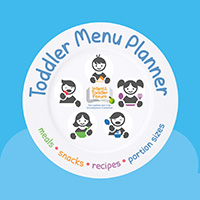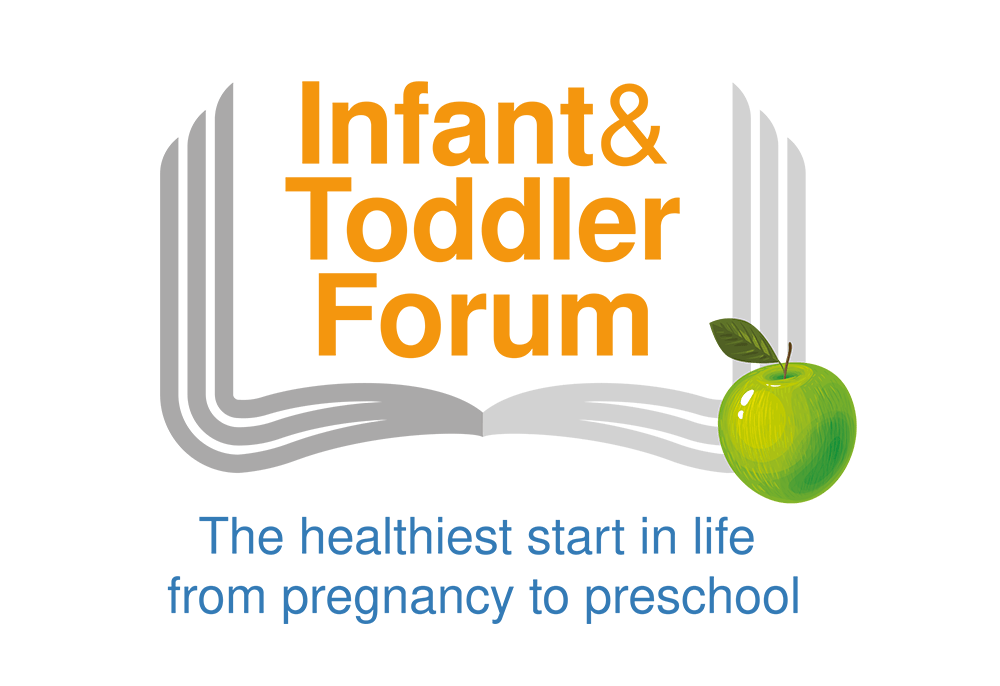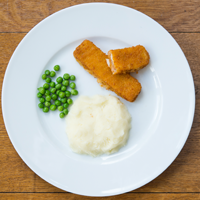Food Group 1: Bread, cereals, potatoes & other starchy foods
Offer a serving from within these portion size ranges at each meal and some snacks.
Foods marked with an asterisk * should be limited to mealtimes and no more than one snack per day because of their sugar content.
View images
Bread slices (fresh or toasted) – wheatgerm
Bread slices (fresh or toasted) – granary
Bread slices (fresh or toasted) – white
Cream / wholemeal crackers
1/2 – 1 mini or 1/4 – 1/2 pitta
Dry flaked cereal (e.g. Cornflakes / Rice Krispies / Cheerios ™)*
Porridge / Ready Brek ™ made up with milk / water
Wheat biscuits (e.g. Weetabix ™)*
COUSCOUS, PASTA, POTATOES AND RICE
Cassava / plaintain – boiled or fried
Pasta in tomato sauce (e.g. spaghetti hoops in tomato sauce)
1/2 – 1 1/2 egg – sized potatoes
Food Group 2: Fruit and Vegetables
Offer at least 1 – 2 servings at each meal and also offer them with some snacks.
These are low energy, high nutrient foods – allow toddlers to eat larger portions if they wish to.
Foods marked with an asterisk * should be limited to mealtimes and no more than one snack per day because of their sugar content
View images
Clementine / tangerine / mandarin
Grapes and berries (e.g. blackberries / blueberries
/ raspberries / strawberries)
3 – 10 small grapes / berries
Kiwifruit / plum / apricot
Stewed fruit / tinned fruit / fruit puree
1 – 4 small florets or 1/2 – 2 tablespoons
1 – 3 tablespoons / 2 – 6 carrot sticks
Celery / cucumber / radishes / peppers / other salad vegetable
2 – 8 small sticks / slices
Courgettes / squash / okra / aubergine
Leeks / onions / shallots
Spring greens / spinach (cooked)
Stir fried or roasted vegetables
1/2 – 1 small bowl (60 – 125ml)
Food Group 3: Milk, cheese and yogurt
Offer a serving from within these portion size ranges about 3 times each day. An excess of these foods can reduce the appetite for iron-containing foods from the other food groups so limit serving sizes to those indicated.
Milk should be given in a cup, mug or glass – not a bottle. Semi skimmed milk can be used from two years of age and skimmed milk from five years of age for children who eat a wide variety of foods, but changing is not necessary.
View images
5 – 10 minutes breastfeeding
1 cup of milk (100 – 120 ml / 3 – 4oz)
Flavoured milk (e.g. chocolate / strawberry)
1 cup of milk (100 – 120 ml / 3 – 4oz)
Formula milk, Growing Up milk or Calcium enriched soya milk*
1 cup of milk (100 – 120 ml / 3 – 4oz)
YOGURTS AND MILK PUDDINGS
Calcium enriched soya dessert
Cheddar / Edam / Parmesan / Brie / Camembert / Mozzarella
In a sandwich or as a pizza topping
1/2 – 1 tablespoon in a sandwich
2 – 4 tablespoons as a pizza topping or in a sandwich
15 – 21g (1 slice / 1 triangle or string / 1 Mini Babybel ™)
Thickly spread on a slice of bread
Food Group 4: Meat, Fish, Eggs, Nuts and Pulses
Offer a serving from within these portion size ranges 2 – 3 times per day – twice for toddlers eating meat and fish and 3 times a day for vegetarians.
View images
Beef burger / lamb burger without bun
Chicken / turkey burger without bun
1 – 2 slices of breast meat
1/2 – 1 small frankfurter
1/2 – 1 ½ small slices 1 ½ – 4 wafer thin slices
1 – 2 slices of breast or dark meat
Fish: white / oily fresh fish
1/4 – 1 small fillet or 1 – 3 tbsp
Shell fish: prawns, mussels etc
Tinned fish in a sandwich / salad (e.g. tuna / salmon / sardines)
Ground, chopped or crushed nuts
Peanut butter or other nut butters
1/2 – 1 tablespoon or thinly spread on bread
Baked beans in tomato sauce
Bhajis or pakora made with chickpea flour
1/2 – 1 ½ bhajis or pakoras
1 – 3 mini falafels (25g each)
Red kidney beans / bean salad / other starchy beans
Homemade soups with meat / fish / pulses
1 small bowl (90 – 125ml)
Food Group 5: Foods high in Fat and Sugar
Toddlers under two years of age have lower energy requirements and should not be offered sweet puddings, cakes, biscuits, confectionery, chocolate or savoury snacks such as crisps.
Biscuits, cakes and puddings
Include once a day.
View images
Plain (e.g rich tea / ginger nut)
Sandwich (e.g. bourbon / custard cream)
Cake – style pudding with fruit (e.g. apple sponge cake)
Cake – style pudding without fruit (e.g. sticky toffee pudding)
Madeira / swiss roll / sponge
Danish / chocolate croissant
1/8 – 1/4 of a large (125g) muffin
Fruit crumble (e.g. apple or rhubarb crumble)
Fruit pie or tart (e.g. apple pie / apricot tart)
Fats and oils
Include 2 servings per day
thinly spread – 1 teaspoon
Mayonnaise / salad cream / oil / vinegar dressing
Oil for frying – rapeseed oil is best
Sauces and sweet and savoury spreads
Include 1 serving per day
SAUCES AND SWEET AND SAVOURY SPREADS
thinly spread – 1 teaspoon
Honey / jam / marmalade / syrup
thinly spread – 1 teaspoon
Tomato ketchup / brown or BBQ sauce
Confectionery, sweet drinks and savoury snacks
Limit these foods to occasional mealtimes – no more than one item once a week.
CONFECTIONERY AND SWEET DRINKS
Bar of chocolate / chocolate – coated biscuit bar
2 – 4 squares or a funsize chocolate bar
1/4 – 1/2 small ice lolly
Soft Sweets (e.g. jelly tots / jelly beans)
Crisps and packet snacks (e.g. Wotsits ™ / Hula hoops ™)
4 – 6 crisps / Wotsits ™ / Hula hoops ™
French fries – thin (fast food)
Fried flatbreads (e.g. puris / parathas)
1/8 – 1/4 small puris or parathas
Portions with foods from more than one food group
The food groups included in each portion are shown in the third column of each table.
View images
CASSEROLES, CURRIES, STEW OR STIR FRY
Meat / chicken / fish / pulses with vegetable based sauce and potatoes
Meat / chicken / fish / pulses with vegetable based sauce without potatoes
Fish battered or in breadcrumbs
Pizza (meat / vegetable / cheese toppings)
1 – 2 small slices / 1/4 – 1 mini (70g) pizza
Pizza (vegetarian toppings)
1 – 2 small slices / 1/4 – 1 mini (70g) pizza
Shepherds pie / cottage pie
1/2 – 1 1/2 small slices (30 – 90g)
1/2 – 1 samosa or 1 – 2 small samosas
1/2 – 1 samosa or 1 – 2 small samosas
1/2 – 1 individual Yorkshire pudding
Homemade vegetable soup with meat / fish / lentils / beans
1 small bowl (90 – 125ml)
1 small bowl (90 – 125ml)





